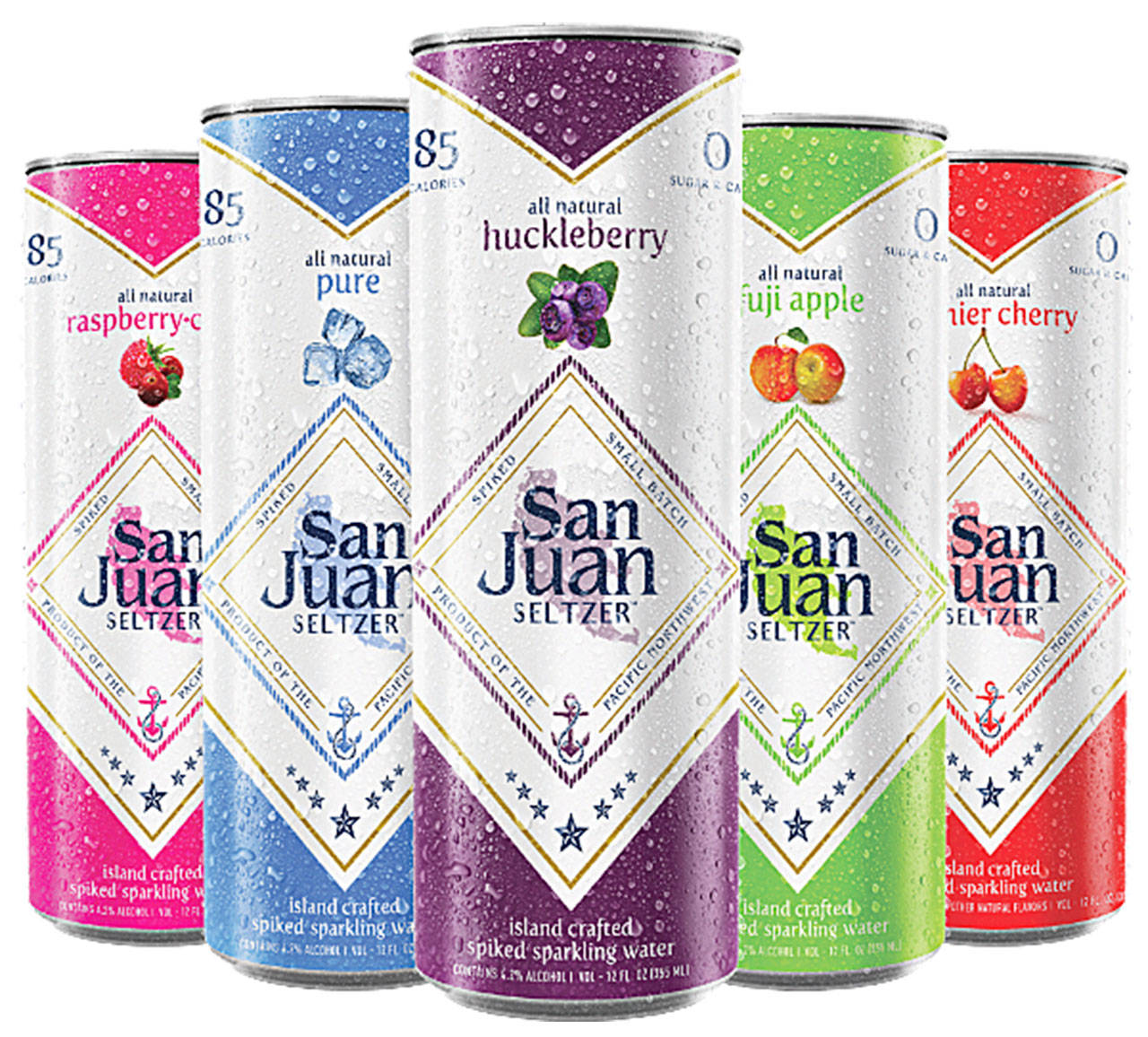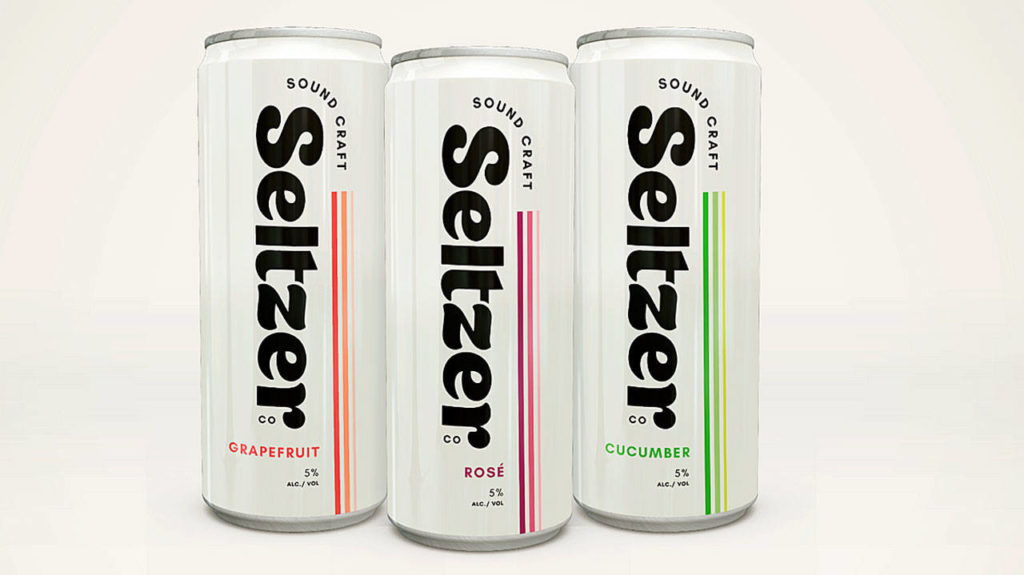In this new world of low-sugar, no-carb dieting, sugary sodas and juices have lost favor. Diet sodas, the old favorite of many trying to make a healthy choice, are out as well.
Into that void has stepped sparkling water. La Croix. Polar. Bubly. Over the past few years, the sparkling water craze has swept the country. And just like any fad in beverages, the spiked, or alcoholic, version isn’t far behind.
If you’ve visited your local grocery beer aisle lately, you’ve undoubtedly noticed the many hard seltzer brands crowding the shelves. White Claw, Bon & Viv and Truly are some of the national brands. Locally, San Juan Seltzer, Sound Seltzer and Day Fade are all brewed at Washington brewery facilities.
Think of them as wine coolers for the wellness generation.
Not one to miss out on the next big thing, Shawn Loring, owner of Lazy Boy Brewing in Everett, is jumping into the act. Even if it is on a small scale. Loring recently partnered with Craig Davidson to brew a small 10-gallon pilot batch of a coconut and lime hard seltzer.
Davidson, a longtime customer and friend, is lending Loring his 10-gallon Spike Brewing brew system to make the test batches.
“You can’t make a mistake on 500 gallons, but you can on 10,” Davidson said. “If it works it works, but if it doesn’t then we can just dump it. The hope is that this does take off, and we can scale it up from there.”
The early results are promising. The version brewed by Loring and Davidson is light and refreshing. The two used coconut water and 4 pounds of fresh limes to flavor the sparkling beverage, which is really just sugar, water and champagne yeast, with any adjuncts added for flavor. I tasted the non-carbonated version, and it’s less sweet and a tad more dry than the other hard seltzers I’ve tried.
The coconut lime hard seltzer will go on tap on Wednesday at Lazy Boy.
“We’ll see what the reaction is in the tasting room and go from there,” Loring said. “I’d say right now we’re planning on it being on tap through the summer.”
Like the regular seltzer craze, the hard seltzer craze is fueled by the health conscious. Most hard seltzers are less than 4.0 percent ABV, 100 calories and just a couple of grams of carbohydrates. That’s about half the ABV, calories and carbs found in a run-of-the-mill beer. It’s the same reason Michelob Ultra at 2.6 carbohydrates and 95 calories has becomes something of a fan favorite for workout warriors who want to keep beer in their diet.
Davidson said he started taking notice of the clear, sparking “hard” beverages when he saw his daughter and all of her friends drinking them.
“They want something healthy, but they also want a little fun in their life,” Davidson said.
“Plus, you can also drink a couple of them and not get bombed,” Loring added.
The numbers bare it out. Like the hard cider explosion before it, the hard seltzer market has undergone dynamic growth in a short period of time. While craft beer sales have either flattened or dipped slightly over the past two years, hard seltzer has gone from $8 million in sales nationwide three years ago to just under $500 million in 2018.
“I see a market,” Loring said. “We’re always on the lookout for the next big thing, and right now that’s hard seltzer.”
Loring said he plans for the hard seltzer to be on draft only for now. He’s not ruling out canning eventually, but right now sees an opportunity in the market, especially for watering holes to use hard seltzer on draft as a mixer in cocktails.
Taste test
I’m a beer guy. But I put my bias aside and tried some local hard seltzers for research. First up, I tasted San Juan Seltzer’s Huckleberry. Made at Schooner Brewing (formerly Schooner Exact Brewing), San Juan Seltzer is crisp and refreshing, but I found the berry flavor to be cloying and a bit fake.
Next up, I tried Sound Seltzer’s Cucumber. Made by Seattle’s Two Beers/Seattle Cider, Sound Seltzer actually uses fermented fruit juice instead of flavoring. The difference was notable. The cucumber hard seltzer was bright but the flavor was muted, almost in the background, and it tasted like real cucumbers. It was like a wine spritzer, not a La Croix with vodka added.
To be honest, that’s about all I could muster. I’d say both were better than my recollections of Zima, which is a malted beverage.
Talk to us
> Give us your news tips.
> Send us a letter to the editor.
> More Herald contact information.


























